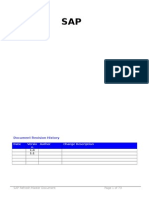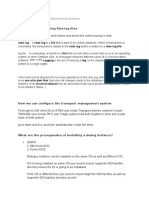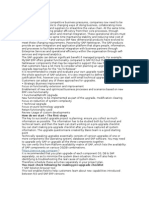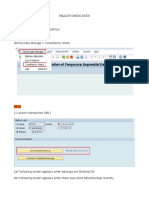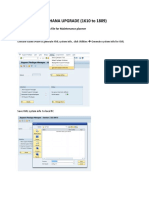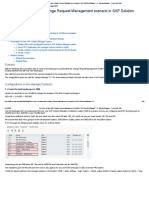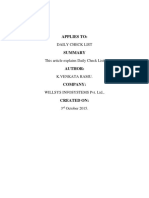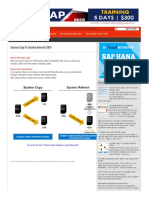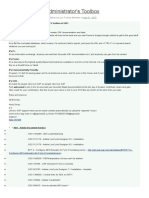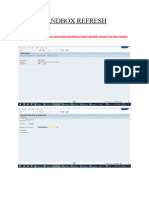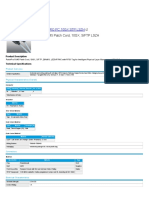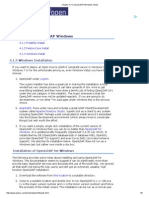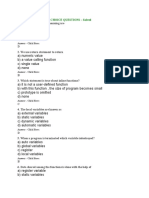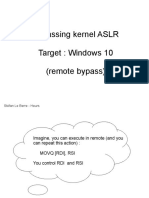0% found this document useful (0 votes)
631 views2 pagesSap System Refresh
The document outlines the steps needed to perform a system refresh of an SAP system. This includes:
1) Exporting user master and authorizations from the target system before overwriting with the source data.
2) Taking snapshots of client settings, logon groups, printers, and other configuration details to maintain after refresh.
3) Creating a transport request to back up additional settings and authorizations.
The refresh then involves restoring the source database to the target system, followed by post-refresh configuration steps like importing user master, transports, and reconfiguring settings.
Uploaded by
Sunil KumarCopyright
© © All Rights Reserved
We take content rights seriously. If you suspect this is your content, claim it here.
Available Formats
Download as DOCX, PDF, TXT or read online on Scribd
0% found this document useful (0 votes)
631 views2 pagesSap System Refresh
The document outlines the steps needed to perform a system refresh of an SAP system. This includes:
1) Exporting user master and authorizations from the target system before overwriting with the source data.
2) Taking snapshots of client settings, logon groups, printers, and other configuration details to maintain after refresh.
3) Creating a transport request to back up additional settings and authorizations.
The refresh then involves restoring the source database to the target system, followed by post-refresh configuration steps like importing user master, transports, and reconfiguring settings.
Uploaded by
Sunil KumarCopyright
© © All Rights Reserved
We take content rights seriously. If you suspect this is your content, claim it here.
Available Formats
Download as DOCX, PDF, TXT or read online on Scribd
/ 2


